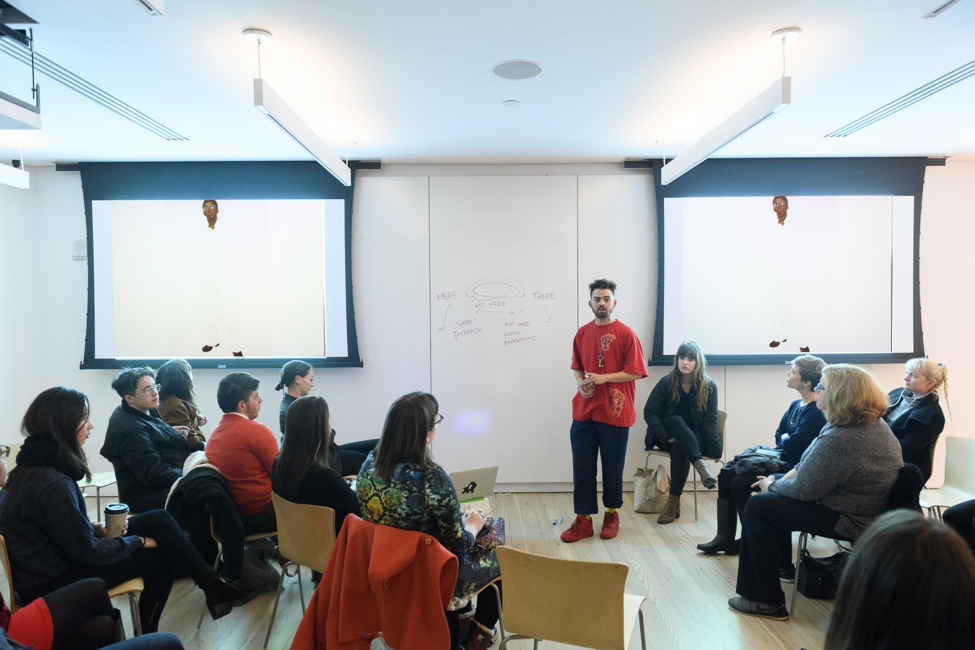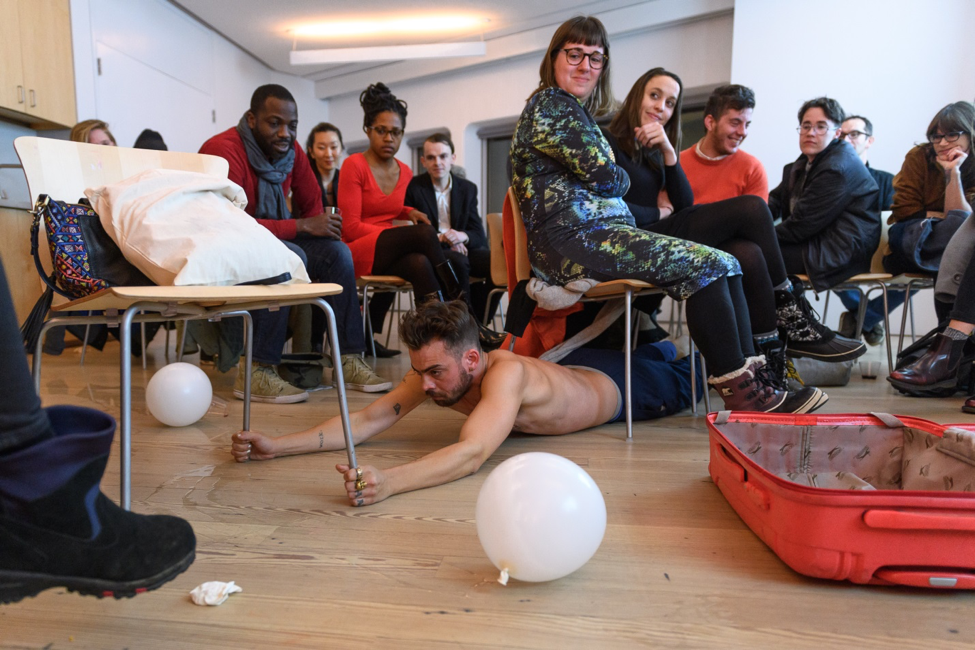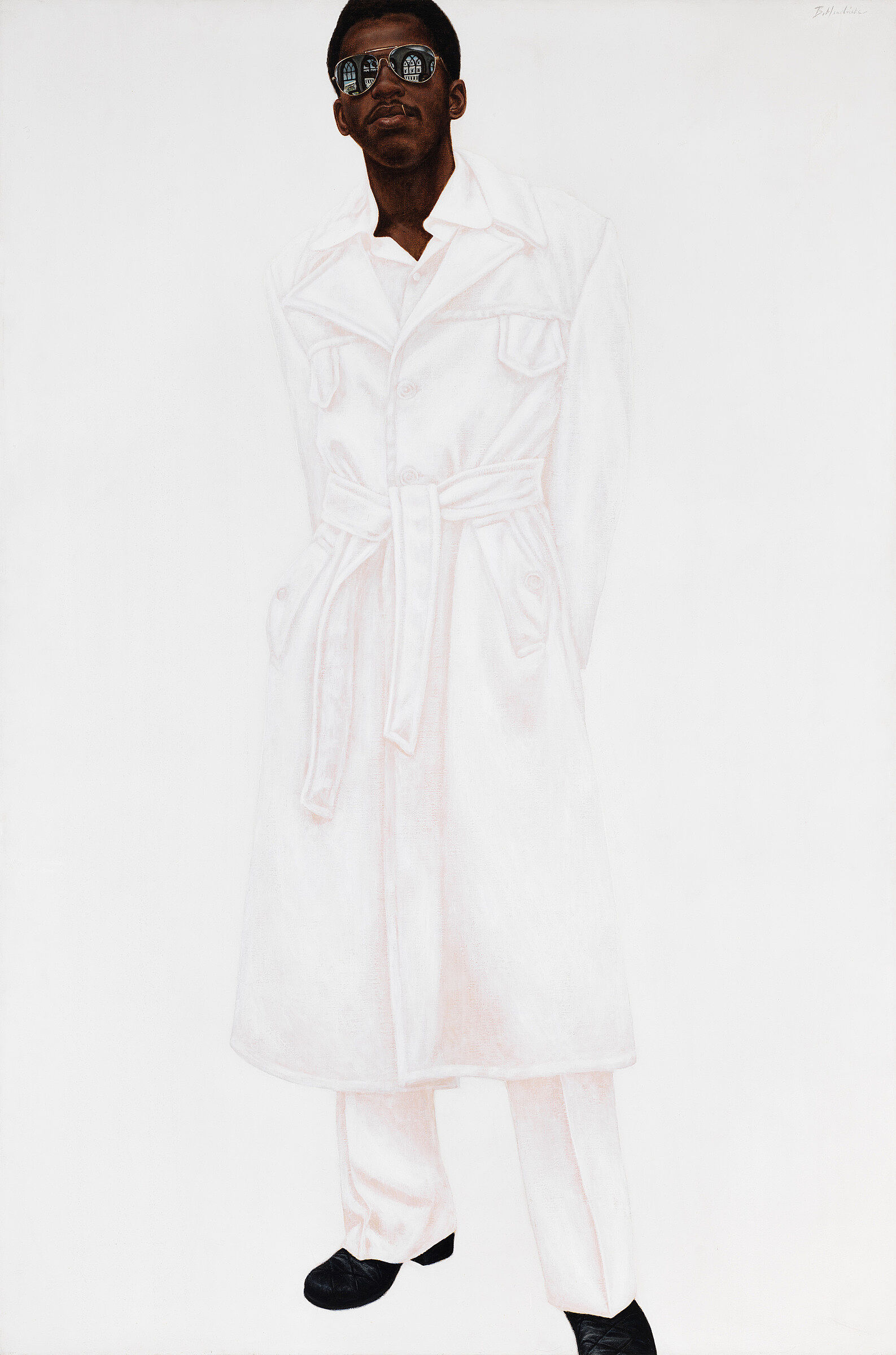Study Sessions: Geo Wyeth
Jun 16, 2017
Artist Geo Wyeth kicked off Study Sessions, a new series inspired by Fred Moten and Stefano Harney’s notion of study as “what you do with other people.” Wyeth began with a discussion of late painter Barkley L. Hendricks’s portrait Steve, 1976. Who is Steve? Is he here, is he there? The audience responded to the pop of Steve’s brown skin against his sharp white background, and the grey lines that illustrate the details in his trench coat. What does such a confident pose communicate?
With Steve, as with much of his evocative portraiture, Hendricks communicates the movement, history, narrative, and disposition of personal style despite the constraints of the two-dimensional medium of paint and canvas. His work demonstrates how style struts and poses at the intersection of reference, self-conception, and interpretation—all of which repeatedly prove inseparable from history’s social scripts. Are you threatened, intrigued, fascinated? How do you style yourself and why?
Interpretations of style often derive from how we perceive the people that contextualize it. Following the discussion of Steve, Wyeth performed Act 1 (Trade), 2016. The artist wandered the space wearing spectacles filled with uninflated white balloons, wheeled a red suitcase behind him, plopped the suitcase into the sink and filled it with water, and tore through his t-shirt before crawling beneath attendees’ chairs. At various moments he appeared at one side of the room or the other and repeated the question: Do you cross the street on a diagonal line, exposing all the latest fashions?
How others interpret your appearance is a phenomena as familiar to fashion as it is to the race and gender categories to which fashion is historically tied. When you wear your shirt, your pants, your hat this way, is your intended impression misread or does it communicate how you’d like it to? What if the silhouette of your jeans or the cuff of your sleeves summons a different reference in your audience than it does in you; what parts of you (that can’t be taken off) determine this?
Do you cross the street on a diagonal line?
By Justin Allen, Assistant to Access and Community Programs.




